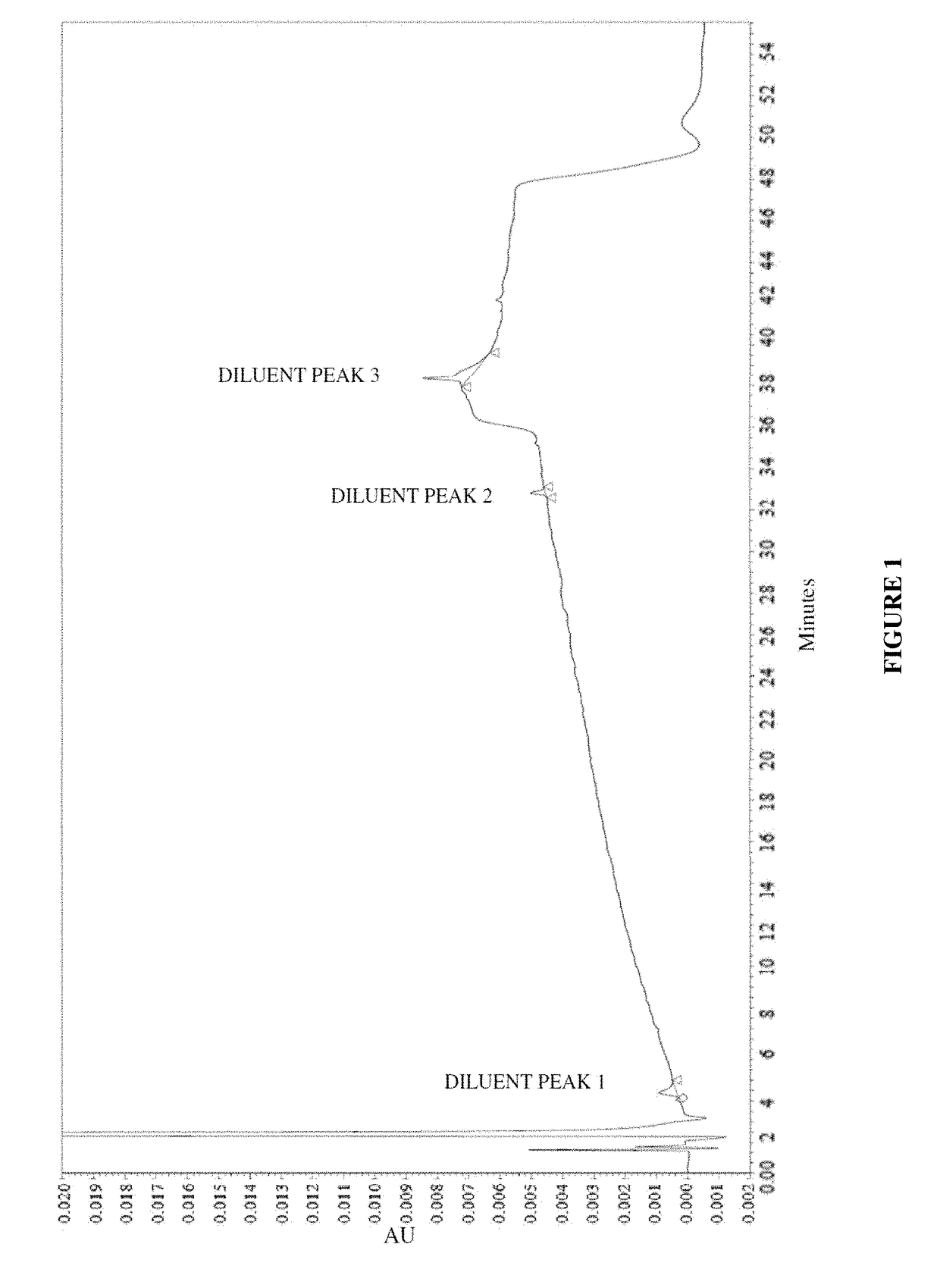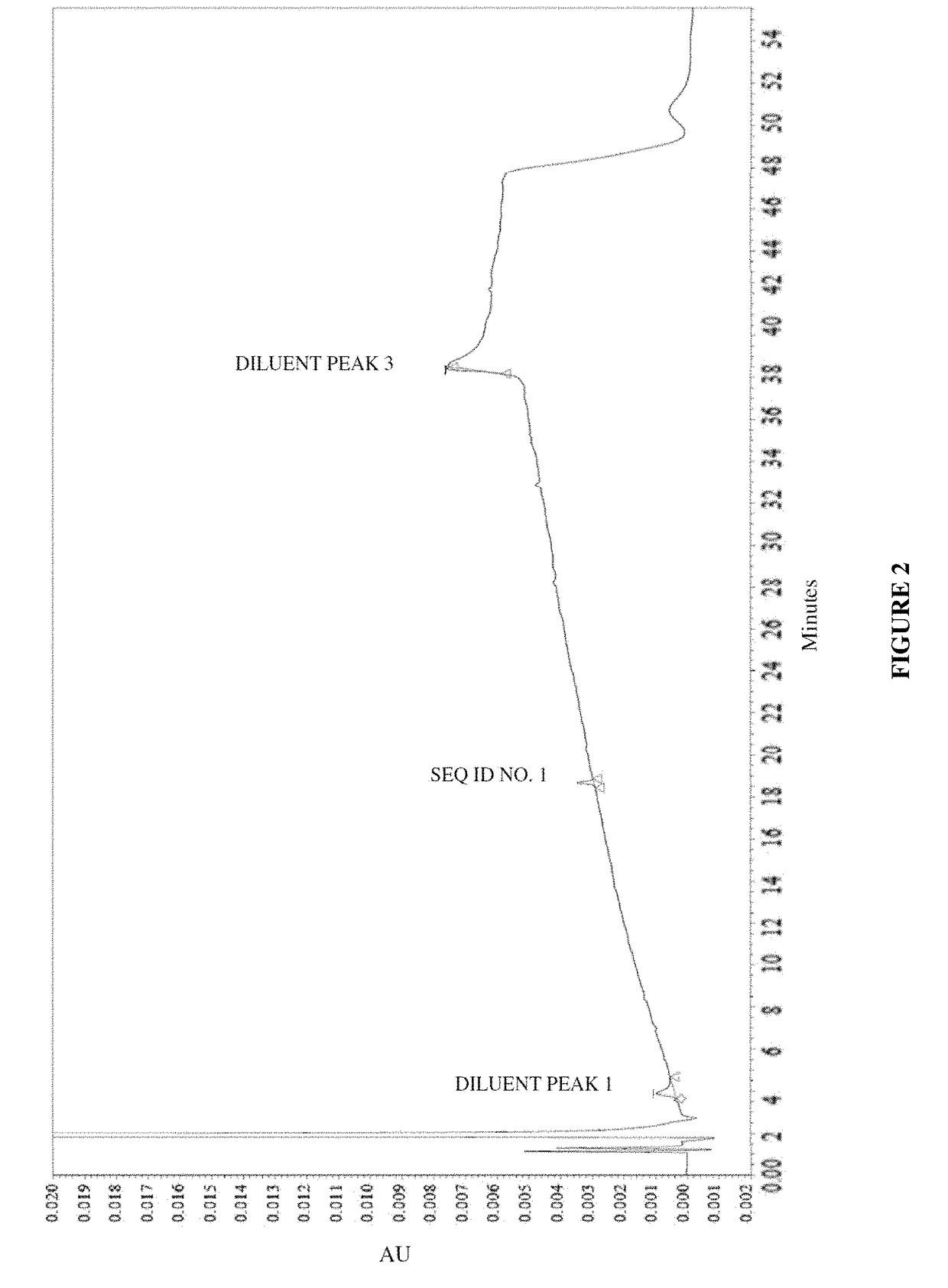Vasopressin formulations for use in treatment of hypotension
a technology of vasopressin and formulation, which is applied in the field of vasopressin formulations for use in the treatment of hypotension, can solve the problems of poor long-term stability of current vasopressin formulations, and achieve the effect of less degradation
- Summary
- Abstract
- Description
- Claims
- Application Information
AI Technical Summary
Benefits of technology
Problems solved by technology
Method used
Image
Examples
example 1
Impurities of Vasopressin as Detected by HPLC
[0217]To analyze degradation products of vasopressin that can be present in an illustrative formulation of vasopressin, gradient HPLC was performed to separate vasopressin from related peptides and formulation components. TABLE 2 below depicts the results of the experiment detailing the chemical formula, relative retention time (RRT), molar mass, and structure of vasopressin and detected impurities.
[0218]Vasopressin was detected in the eluent using UV absorbance. The concentration of vasopressin in the sample was determined by the external standard method, where the peak area of vasopressin in sample injections was compared to the peak area of vasopressin reference standards in a solution of known concentration. The concentrations of related peptide impurities in the sample were also determined using the external standard method, using the vasopressin reference standard peak area and a unit relative response factor. An impurities marker s...
example 2
Investigation of pH
[0263]To determine a possible pH for a vasopressin formulation with good shelf life, vasopressin formulations were prepared in 10 mM citrate buffer diluted in isotonic saline across a range of pH. Stability was assessed via HPLC as in EXAMPLE 1 after incubation of the formulations at 60° C. for one week. FIG. 9 illustrates the results of the experiment. The greatest level of stability was observed at pH 3.5. At pH 3.5, the percent label claim (% LC) of vasopressin was highest, and the proportion of total impurities was lowest.
example 3
Effect of Peptide Stabilizers on Vasopressin Formulation
[0264]To observe the effect of stabilizers on the degradation of vasopressin, a series of peptide stabilizers were added to a vasopressin formulation as detailed in TABLE 4. Stability of vasopressin was assessed via HPLC after incubation of the formulations at 60° C. for one week.
[0265]
TABLE 4n-Meth-PEGPoloxamerylpyrrolidoneEthanol400Glycerol188HPbCDa(NMP) 1% 1% 1% 1% 1% 1%10%10%10%10%10%10%aHydroxypropyl beta-Cyclodextrin
[0266]FIG. 10 illustrates the stability of vasopressin in terms of % label claim at varying concentrations of stabilizer. The results indicate that the tested stabilizers provided a greater stabilizing effect at 1% concentration than at 10%. Also, in several cases the stabilization effect was about 5% to about 10% greater than that observed in the experiments of EXAMPLE 2.
PUM
| Property | Measurement | Unit |
|---|---|---|
| flow rate | aaaaa | aaaaa |
| temperature | aaaaa | aaaaa |
| volume | aaaaa | aaaaa |
Abstract
Description
Claims
Application Information
 Login to View More
Login to View More - R&D
- Intellectual Property
- Life Sciences
- Materials
- Tech Scout
- Unparalleled Data Quality
- Higher Quality Content
- 60% Fewer Hallucinations
Browse by: Latest US Patents, China's latest patents, Technical Efficacy Thesaurus, Application Domain, Technology Topic, Popular Technical Reports.
© 2025 PatSnap. All rights reserved.Legal|Privacy policy|Modern Slavery Act Transparency Statement|Sitemap|About US| Contact US: help@patsnap.com



